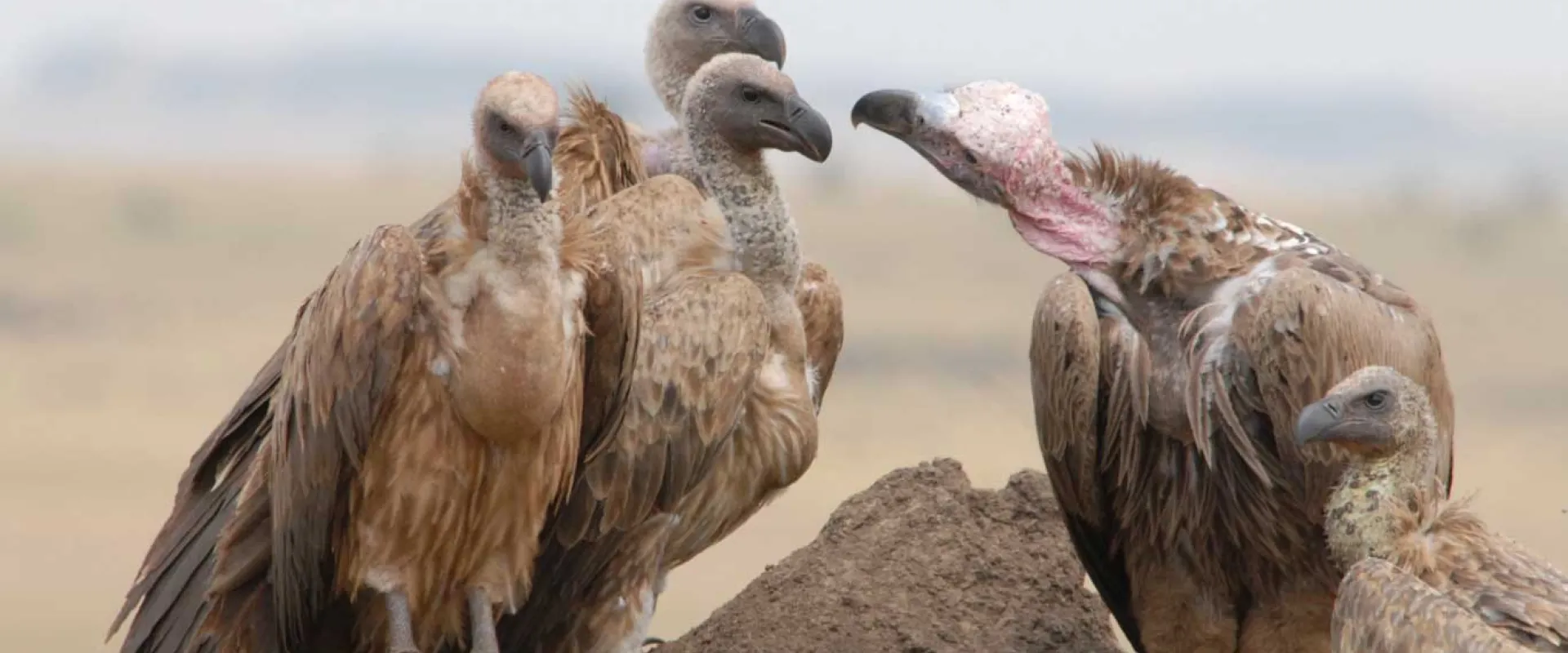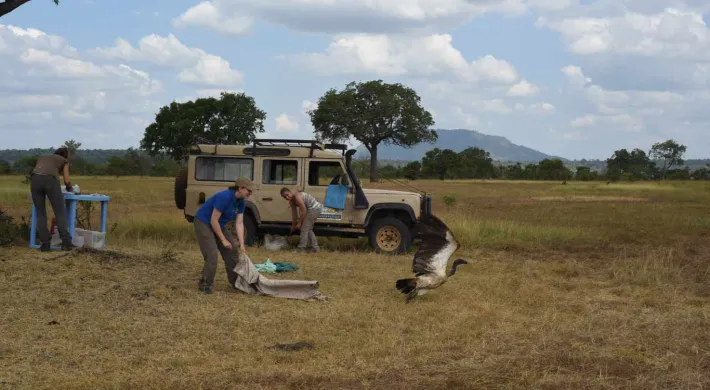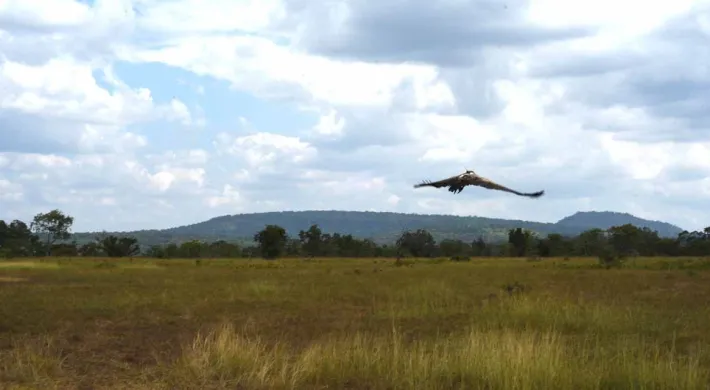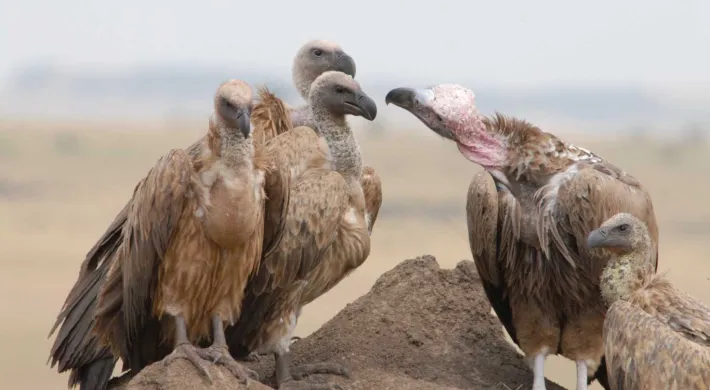Written by Claire Bracebridge, Tanzanian Vulture Program Manager, North Carolina Zoo
International Vulture Awareness Day every September 4 celebrates how remarkable vultures are while highlighting their plight in the wild. In Tanzania, rangers serve as 'boots on the ground' to the vultures' "eyes in the sky" and are often the first responders to a poisoning event, the main threat faced by Tanzania's vultures.
Unfortunately, responding to mortality alerts from our tagged vultures (see the Catch a Vulture by the Toe blogs by Dr. Corinne Kendall: Blog 1, Blog 2, Blog 3) has become much more frequent in the past couple of years. Currently, we have 21 vultures tagged across two large landscapes in southern Tanzania, covering approximately 150,000 km sq, an area slightly larger than the state of North Carolina! Our monitoring activities have highlighted southern Tanzania as a stronghold for vultures and the threats to these iconic birds.
As poisoning is the biggest problem for Tanzania's vultures, the Zoo's Vulture Program systematically teaches the local rangers the practical steps to deal with a poisoning incident. We've trained 179 rangers to date, and in May 2021, we provided a 2-day training to a mix of 39 community and wildlife authority rangers.
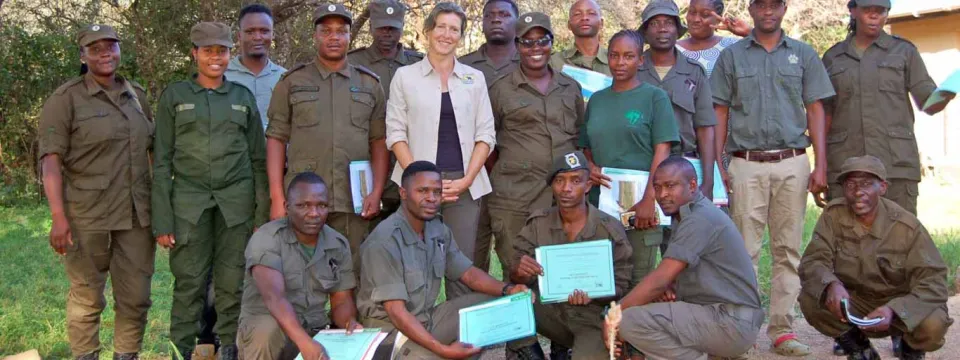
Pictured Above: Group photo at the end of the training session
While rangers know that vultures can lead them to a carcass, they generally do not know about vulture biology, their remarkable contribution as nature's 'Cleanup Crew' in waste disposal and disease removal, and that populations are fast declining due to poisoning. So, we start with this.
It is always rewarding to see how the rangers' appreciation and fascination grow as they learn about vultures. They cannot believe that a vulture will only lay one egg every one to two years (not a dozen like a chicken), or that it takes two parents six months of hard work to fledge a chick, or that an adult could live to 30 years if it can avoid being poisoned.
The social feeding habits of White-backed vultures can lead to large numbers of deaths at a poisoning site. The gravity of the situation is evident on everyone's faces, coupled with head shaking and tutting. The rangers want to know how to deal with a poisoning event, and I am only too happy to stop talking and let the practical sessions begin.
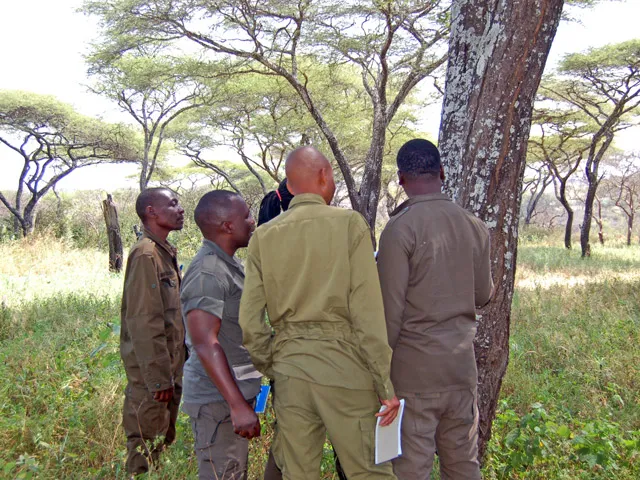
Gathering information in the poisoning event scenario
Group work delves straight into simulated poisoning event scenarios to help practice filling in the data forms – important evidence collected from the crime scene that can be used in court. After each exercise, we go through the forms together, discussing and consolidating knowledge. The practice exercises migrate from the classroom to outdoors, where the groups must search for hidden cards representing information on carcasses spread out from the center of a poisoning event.
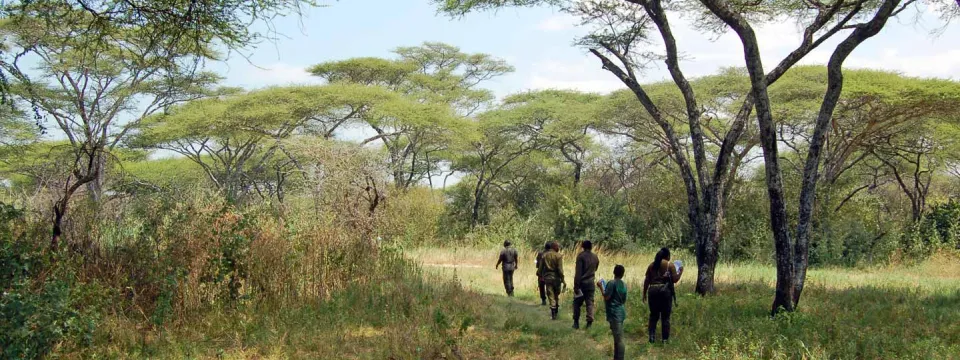
Pictured Above: Searching for clues during the poisoning event scenario
As a team, they learn about the thoroughness needed to search the area and finding all the dead animals to prevent secondary poisoning. They look for any alive but sick birds – whereby simply putting it in the shade and offering it water might be the difference between life and death. We have some amusing but serious discussions about the logistics of getting a sick bird out of a tree!
They learn that if there’s not a person serving as a lookout at the poisoning epicenter, you might get other vultures landing to feed and even more deaths. They learn how to take a tissue sample (if a vet cannot come) to send to a laboratory and identify the toxin used – most commonly agricultural pesticides.

Pictured Above: Group work practicing data collection during poisoning scenario
Once all the evidence is gathered, we highlight the importance of thorough and safe disposal (usually burning) of all the contaminated carcasses. We emphasize the rangers' protection and safety first - part of the kit we provide them with includes gloves and sample collection bags, syringes, face masks, handwash, matches, etc.
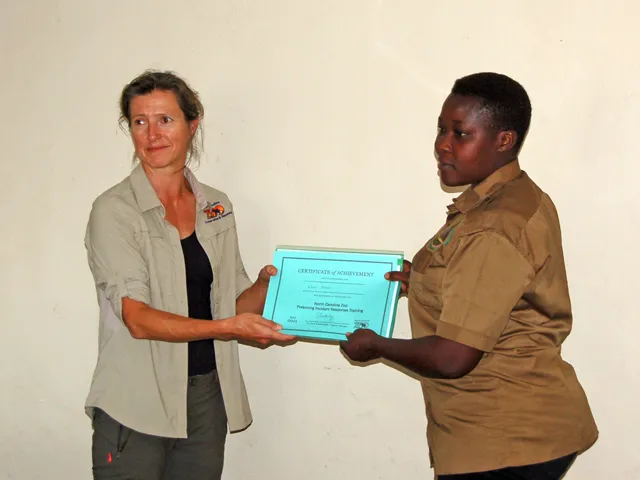
Receiving the training certificate upon completion of the scenario
The group exercises brought up a lot of questions and discussions. When the rangers did their final exam, the gains in knowledge and confidence were impressive, with an average test score of 70% compared to the pre-training test score of 25%. The final part of the training was the all-important handing out of certificates. This came with much posing for photos and laughter. After words of thanks and appreciation, the rangers left for their respective ranger posts, armed with an additional tool kit to support their frontline conservation efforts.
